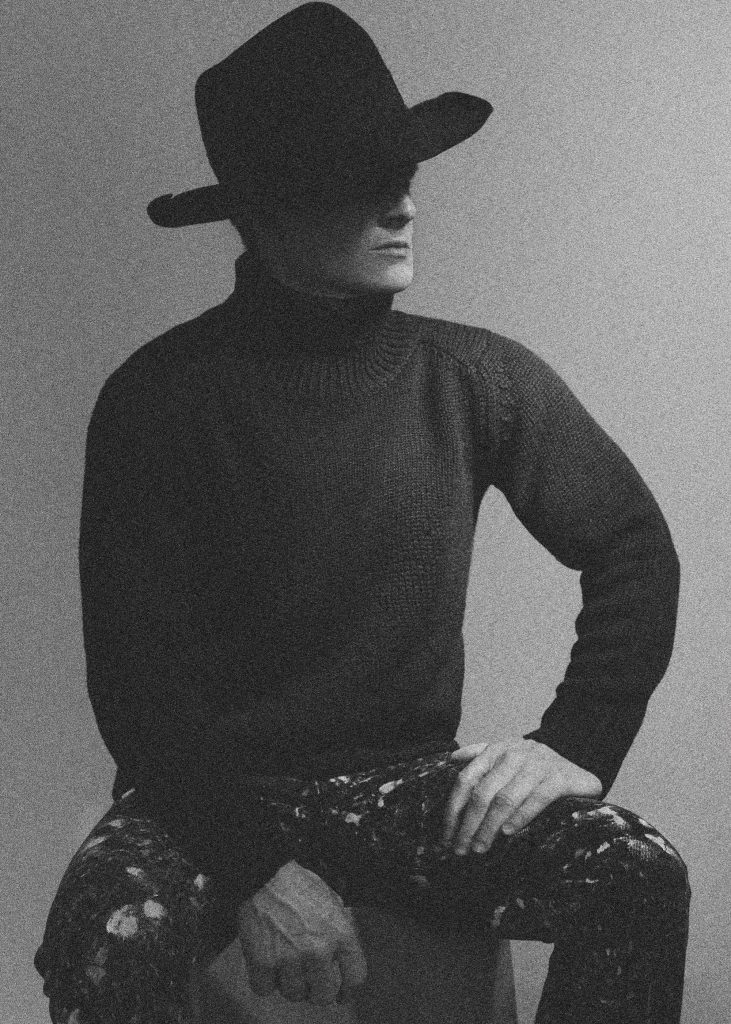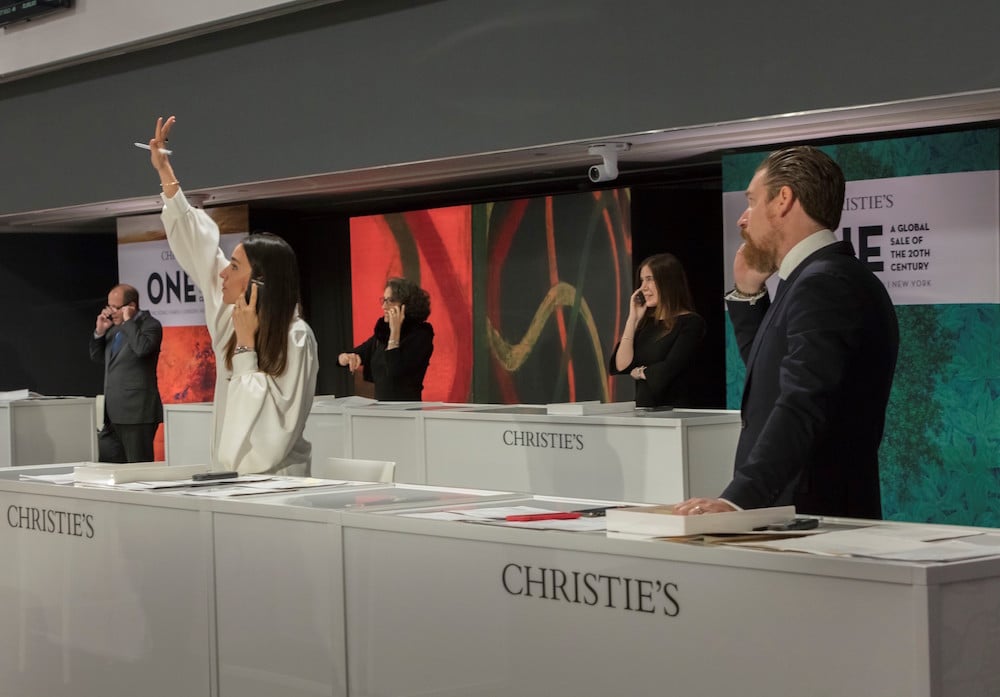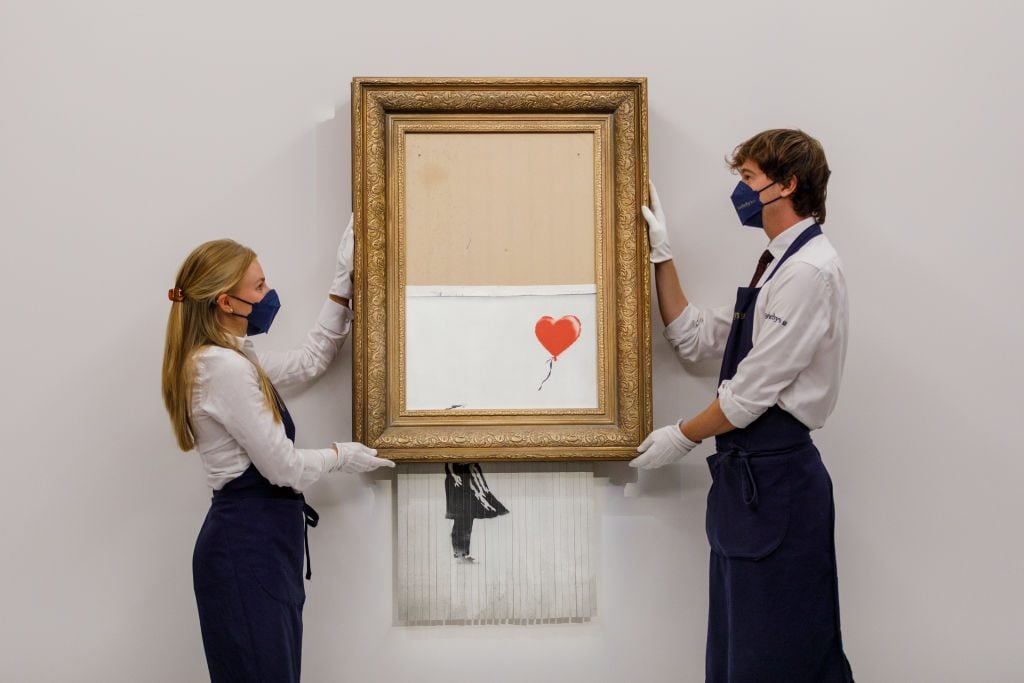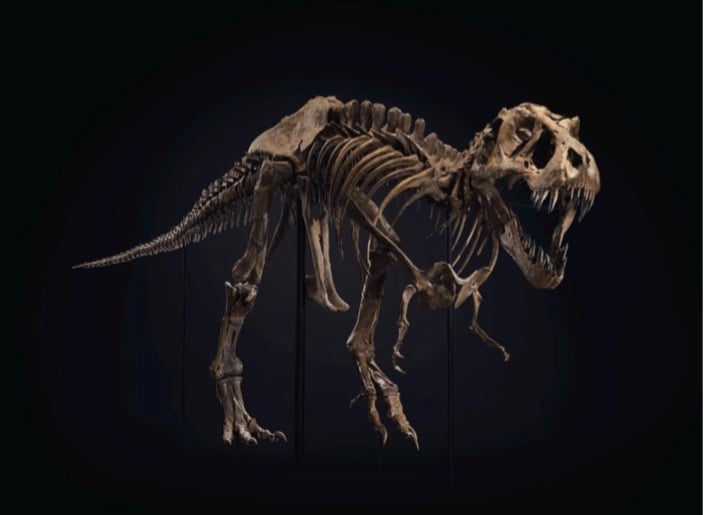Auctions
From Dino Bones to a Metaverse Debut, Here Are 7 of the Weirdest Stunts Auction Houses Pulled Off During the Pandemic Era
The wildest part is that while they were shocking at the time, many don't even seem that weird anymore!

The wildest part is that while they were shocking at the time, many don't even seem that weird anymore!

Amah-Rose Abrams

Auction houses have always had to work hard to keep their audiences awake and their wallets engaged. This has, over the years, involved a fair amount of experimentation, which sometimes paid off handsomely (NFTs, anyone?) and other times felt… just weird. (No, Christie’s, we actually won’t ever forget that time you hired a Spider-Man from the ill-fated Broadway show to to unveil a Louise Bourgeois spider at Rockefeller Center in 2011.)
Like many of us, auction houses had to get especially creative during the pandemic, pulling off some of their most inventive gymnastics to keep the wheels of commerce turning.
Whether it was branching into crypto or selling tins of conceptual art poop, it has been a strange old time for a very strange, very old business. Here are seven weird and wonderful things these behemoths have done to bring in the dollars, pounds, and ETH in the pandemic era. If nothing else, it’s a reminder of just how recently stunts that now seem normal were considered off-the-wall.

Beeple, Everydays – The First 5000 Days. Courtesy of the artist and Christie’s.
What Happened: While it may now feel like NFTs have always been around, it definitely seemed like we had reached peak pandemic absurdity back in March when everyone started talking about Christie’s selling something called an NFT by an unknown artist named Beeple for the mind-blowing sum of $69 million. The sale made art-market history and prompted Noah Davis, the Christie’s specialist who organized the Beeple (a.k.a Mike Winkelmann) sale, to remark that he now looks at life “as pre-Beeple and post-Beeple—like the world thinks about before Jesus Christ and after.”
The Justification: “Marking two industry firsts, Christie’s is the first major auction house to offer a purely digital work with a unique NFT (Non-fungible token)—effectively a guarantee of its authenticity—and to accept cryptocurrency, in this case Ether, in addition to standard forms of payment for the singular lot,” the auction house said in a statement at the time.
Scale of Weirdness: ❓❓❓❓❓ / ❓❓❓❓❓—Even the artist couldn’t believe it, tweeting out “holy f*ck” as he watched the action unfold.

Welcome to the metaverse. Courtesy of Sotheby’s Twitter.
What Happened: Not to be outdone by Christie’s, Sotheby’s signaled its openness to the world of Web3 when it opened up shop inside the Metaverse in October. Decentraland is a VR blockchain platform where people can both create and purchase digital goods and services. Located in their Voltaire Art District, the virtual outpost opened with an exhibition of the New York sale “Natively Digital,” which ended up bringing in $5.4 million.
The Justification: “We see spaces like Decentraland as the next frontier for digital art where artists, collectors, and viewers alike can engage with one another from anywhere in the world and showcase art that is fundamentally scarce and unique, but accessible to anyone for viewing,” Sotheby’s specialist Michael Bouhanna said at the time.
Scale of Weirdness:❓❓/❓❓❓❓❓— This would have been pure madness in 2020 but given all that has changed this year, it just comes over as a smooth business move.

The anonymous White Male Artist. Photo: Robin Black.
What Happened: Look, we know Piero Manzoni did it, but tins of poop are not normal auction-house fare. Nevertheless, earlier this year, Phillips put tins of feces based on the diets of Banksy, Damien Hirst, Jeff Koons, and Matthew Barney up for sale under the project name $HT COIN by an anonymous “White Male Artist.” Artnet News unmasked the creator as artist-activist Cassils, who was also selling shit based on their own diet. It was Cassils’s own product that reached the highest price of the bunch at auction, fetching $10,710.
The Justification: “White Male Artist operates as a Trojan horse circulating seamlessly with the crypto bros,” Cassils told Artnet News at the time. “But this project is not about getting rich. We are thinking about systems like NFTs and how we can wield them as artistic tools.”
Scale of Weirdness:❓❓❓❓❓/❓❓❓❓❓— Five out of five, we all need to make a living but selling tins of poo for profit is strange in anyone’s book, no matter the conceptual rigor at play.

Christie’s New York team handling bids for the “ONE” sale on July 10. Image courtesy of Christie’s.
What Happened: In July 2020, Christie’s tackled the lack of in-person sales by staging what they called their first “relay” sale. “ONE” was a four-hour marathon that took place consecutively in Hong Kong, Paris, London, and New York, giving bidders in each city the chance to participate after dinner in Hong Kong and before breakfast in New York. Confusion ensued when one auctioneer started to sell work assigned to another. (Still, at least the auctioneers got to switch off—no such joy for the art journalists watching lots for the whole event.) Despite the juggling of locations and currencies, plus a slightly chaotic atmosphere, the sale brought in almost $421 million, just under its high estimate.
The Justification: “Our buyers are global, and this format reflects their varied interests. The new platform mirrors the taste of our collectors,” Christie’s Hong Kong’s Elaine Kwok said at the time.
Scale of Weirdness: ❓❓/❓❓❓❓❓— This was only weird at the time, now it just seems like common sense.

Italian conceptualist Salvatore Garau, via Instagram.
What Happened: Have you heard the tale of the emperor’s new clothes? Italian artist Salvatore Garau may well have read this before he came up with lo sono (I am), a conceptual work that was picked up from Italian house Art-Rite by a lucky art lover for $18,300 with the stipulation that it—it being, well, nothing—be displayed in a private house in a space measuring five-by-five feet.
The Justification: “The vacuum is nothing more than a space full of energy, and even if we empty it and there is nothing left, according to the Heisenberg uncertainty principle, that nothing has a weight,” the artist told Diario AS. “Therefore, it has energy that is condensed and transformed into particles, that is, into us.”
Scale of Weirdness: ❓❓/❓❓❓❓❓— This was a weird happening, without a doubt, but he’s not the first and he certainly won’t be the last to try this kind of thing and pull it off with panache.

Banksy’s Love is in the Bin (2018) at Sotheby’s London on September 3, 2021. (Photo by Tristan Fewings/Getty Images for Sotheby’s)
What Happened: Banksy caused a ruckus at Sotheby’s in 2018 when he rigged an artwork to self-destruct just after it hammered for more than $1 million. The artist’s attempt to give a metaphorical finger to the art market backfired, however, when the shredding mechanism built into the frame broke, immortalizing the stunt in a half-shredded (but still sellable!) artwork. Banksy’s unstoppable market growth in 2021 convinced the owner of this piece of art-market history to part with the work just a few short years later, and it paid off handsomely. When it returned to the block on October 14, it fetched £18.6 million ($25.4 million), some 18 times the original price.
The Justification: The work “was born of the most spectacular artistic happening of the 21st century,” Sotheby’s senior director and chair of modern and contemporary art Alex Branczik said. “During that memorable night, Banksy did not so much destroy an artwork by shredding it, but instead created one.”
Scale of Weirdness: ❓❓❓❓/❓❓❓❓❓— One of the most agile flips we have seen in a long time.

Christie’s sold a nearly complete skeleton of a T-Rex named Stan at its evening sale last week for $28 million ($31.8 million after fees). Image courtesy Christie’s.
What Happened: Eyebrows were raised when Christie’s—without irony or formaldehyde—put a dinosaur skeleton up for sale in its 20th century evening sale towards the end of 2020. “Stan,” one of the most complete Tyrannosaurus Rex skeletons ever discovered, went under the hammer with an estimate of $6 million. Two competing bidders drove the final price to a whopping $27.5 million.
The Justification: “The legendary T. rex is a 20th century cultural phenomenon,” the house said in a statement. “The ‘debut’ of a rex on-screen came just 15 years after the first of the species was first described by science, with the American production Ghost of Slumber Mountain (1918). Further representations of the T. rex can be found horrifying human explorers in The Lost World (1925), battling the eponymous great ape in King Kong (1933), and terrorizing park-goers in the blockbuster Jurassic Park (1993) and Jurassic World (2015) franchises.”
Scale of Weirdness:❓❓❓❓❓/❓❓❓❓❓— Honestly? We’re impressed by this feat of mental gymnastics.